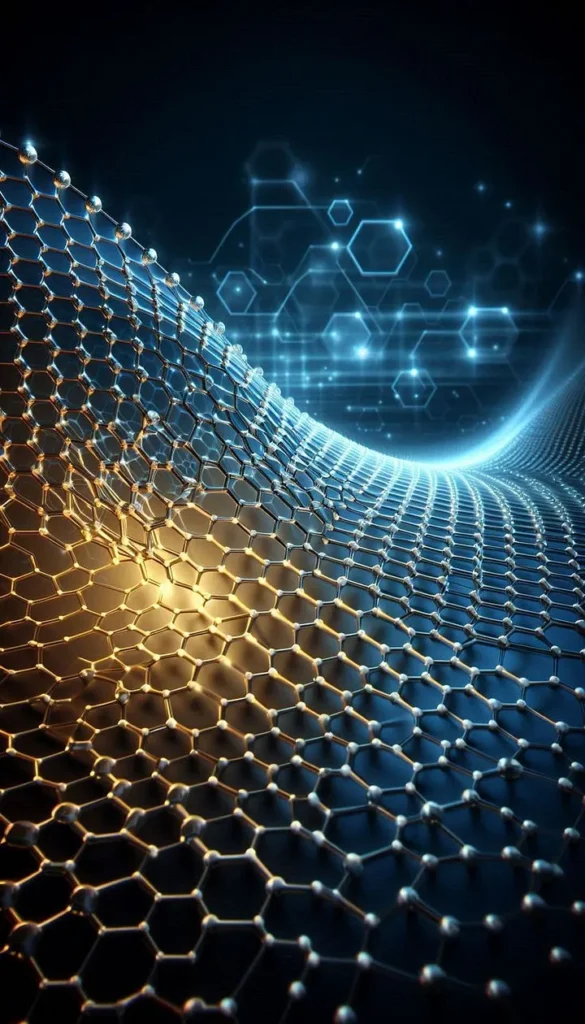Graphene, an allotrope of carbon, is essentially a single layer of carbon atoms arranged in a honeycomb (hexagonal) lattice. Imagine graphite (the stuff in pencils) but stripped down to a single, atom-thin sheet: it is both simple and revolutionary.
Graphene’s incredible qualities stem from its unique structure. The carbon atoms are bonded via sp² hybridization, so strong covalent bonds are formed in two dimensions. These bonds make graphene the thinnest material known and also one of the strongest. In fact, it is 200 times stronger than steel!

But here’s where the magic happens: graphene’s pi electrons are delocalized, freely moving across the plane. As a result, graphene is an excellent conductor of electricity, rivaling copper in efficiency. These electrons act like a superhighway for charges, which makes graphene ideal for applications in electronics, such as transistors and flexible screens. In reality, graphene might even replace silicon in computer chips, making devices faster and cooler (literally).
Its chemical versatility is also equally impressive. The high surface area and reactive edges allow graphene to be functionalized for specific purposes. For example, in water purification, graphene oxide derivatives can trap salts and contaminants while letting water molecules pass through. It leads to molecular-level quality control.
Despite its high-tech potential, scaling up production and cost-efficiency remain challenges. However, with ongoing advancements, graphene continues to bridge chemistry and innovation, proving that a single layer of atoms can change the world.


Leave a Reply